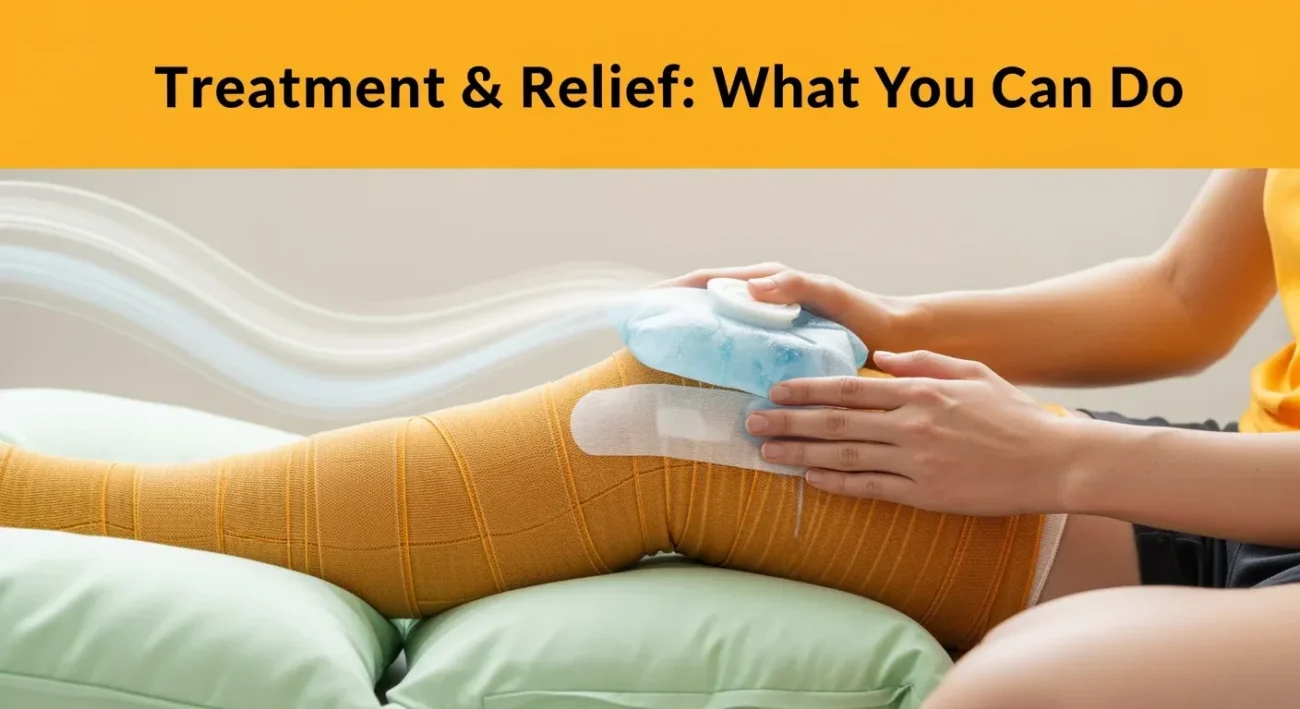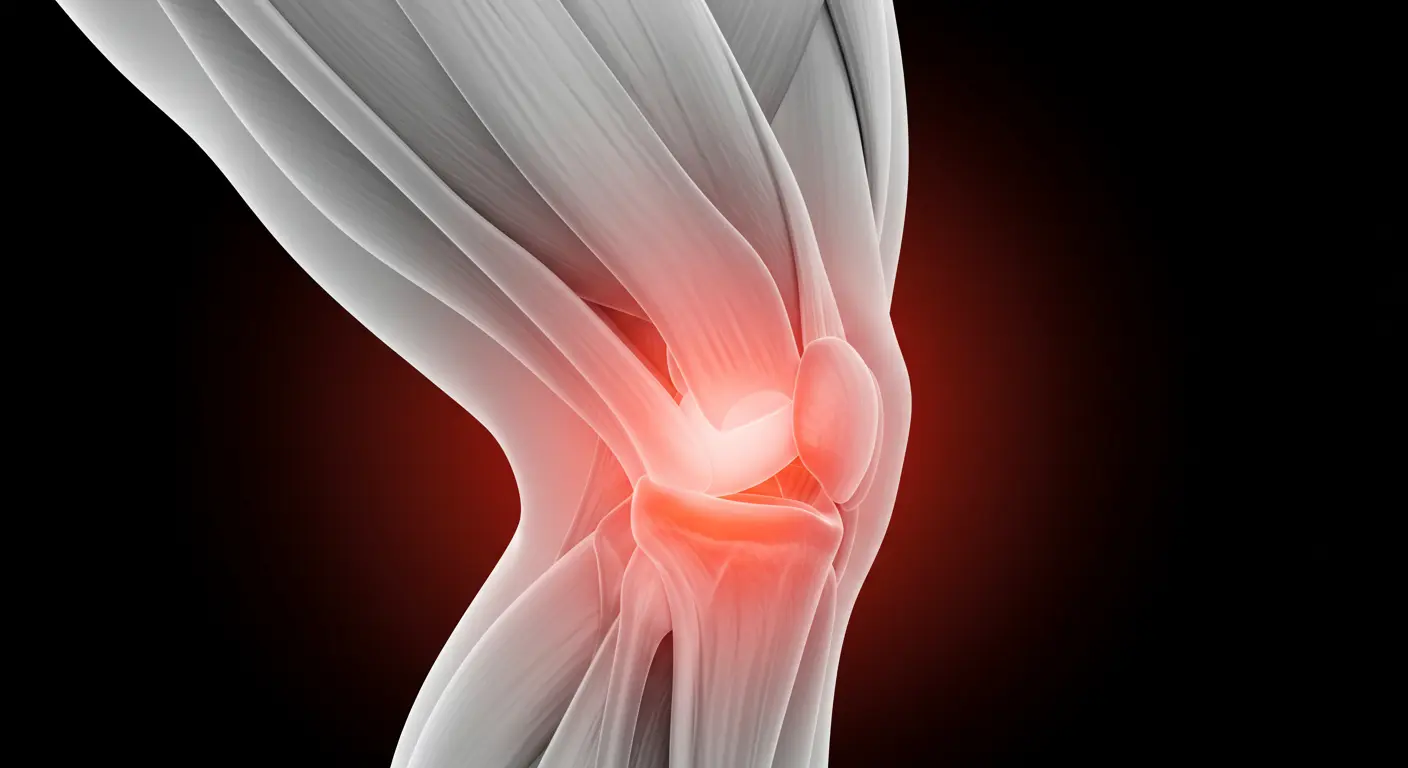Ever felt that nagging ache or sharp pain behind your knee, Like every time you try to walk, bend, climb stairs, or even sit down for a while it whispers, “Hey, I’m back here!” You’re not alone. Pain behind the knee also called posterior knee pain is surprisingly common. It can come from many sources, some mild and some more serious.
I’ll explain exactly what pain behind the knee is, explore why it happens, and walk you through how to treat it or get relief. I’ll also compare common articles out there so you see what you’re getting here that you might not get in other places. My aim is to give you a clear, useful, and kind-of friendly guide that helps you understand what your knee might be trying to tell you and what you can do about it.
What Is “Pain Behind the Knee”?
Pain located behind the knee, in medical terms “posterior knee pain,” means discomfort that arises at the back of your knee joint. It might feel like a dull ache, sharp stabbing pain, tightness, swelling, or even discomfort that radiates into your calf. Sometimes bending or straightening your leg hurts; sometimes it’s when you put weight on it.
This kind of pain is different from pain in front of the knee (around the kneecap) or on the sides. The source of pain behind the knee can be soft tissue (muscles, tendons, ligaments), fluid buildup, bones/cartilage, or even nerves or blood vessels nearby.
Causes of Pain Behind Knee
There are many possible causes. Some are mild, temporary and will get better with rest; others may be more serious and need medical attention. Below are both common and less common causes, including information that many articles mention and some extra details you might not always see.
Hamstring or Popliteal Muscle Strains
When you stretch the back of your thigh too far (for example during sports, sudden movements, or overuse), the hamstring muscles or the popliteus muscle (small muscle behind the knee) may strain. This can cause sharp or burning pain behind the knee, especially when straightening the leg or walking downhill.
Tendon or Ligament Injuries
The ligaments and tendons around your knee help stabilize and move the joint. If one of these is damaged (for example, the posterior cruciate ligament, or PCL), it can cause pain at the back. Tendonitis of hamstring tendons or the gastrocnemius tendon (one of the calf muscles) can also show up here.
Baker’s Cyst (Popliteal Cyst)
If fluid accumulates behind your knee often because of joint irritation or injury it can form a Baker’s cyst. This feels like a bulge and may stretch tightly, causing pain. The cyst might swell and sometimes leak, which makes pain and swelling worse.
Meniscus Tear
Your knee has two menisci (crescent-shaped cartilage pieces) that absorb shock. If you twist your knee awkwardly or have degeneration over time, the meniscus may tear sometimes the back (posterior) portion. This can cause pain behind the knee especially when bending or twisting. Locking or catching of the knee is a red flag.
Arthritis
Over time, wear and tear (osteoarthritis) or autoimmune conditions (rheumatoid arthritis) can wear down cartilage and affect how parts of the knee grind together. That wear can lead to irritation behind the knee. Sometimes arthritis leads to production of excess fluid, contributing to cysts or swelling.
Posterior Cruciate Ligament (PCL) Injury
Much less common than ACL injuries, but still important: the PCL runs along the back of your knee and stabilizes it. Direct blows to the front of a bent knee (like hitting the dashboard in a car crash) or falling hard on a bent knee can injure the PCL. This injury causes pain behind the knee, sometimes instability.
Deep Vein Thrombosis (DVT)
This is less common but serious. A blood clot in the veins of your calf or behind the knee can cause swelling, warmth, redness, and pain. If you see swelling in your calf, especially with pain and redness, get medical help immediately.
Diagnosis:
To know how to treat this pain, you need to know why it’s happening. Here’s how medical folks usually investigate:
- Ask detailed history: when pain started, what makes it worse or better, any injury, how active you are
- Physical exam: check range of motion, swelling, tenderness, ligament stability, muscle strength
- Imaging if needed:
• X-ray (to see bones, arthritis)
• Ultrasound (to see cysts, fluid)
• MRI (to check ligaments, menisci, soft tissues) - Sometimes blood tests (if infection or arthritis suspected)
Treatment & Relief: What You Can Do

Good news: many cases improve without surgery. How quickly depends on cause, how bad, and how soon you act. Below are treatment options from home remedies to medical help.
Self Care
These are things you can often try right away to reduce pain and swelling.
- Rest: avoid activities that worsen the pain (running, jumping, deep knee bends)
- Ice / Cold packs: apply wrapped ice for 15-20 minutes at a time every few hours during first few days of injury or swelling to reduce inflammation
- Compression: a knee bandage or wrap can help reduce swelling and support the knee
- Elevation: keep your knee raised above the level of your heart when resting to reduce fluid buildup
- Protect & Support: avoid putting full weight if painful; use brace, crutches if needed
Movement, Stretching, Strengthening
Often people think rest is everything but gentle movement helps reduce stiffness and promote healing.
- Gentle stretches for hamstrings, calves
- Strengthening exercises for muscles around knee (quadriceps, hamstrings, glutes) so your knee has better support
- Low-impact activities like swimming, cycling, walking (if tolerable)
Over the Counter Meds & Other Non Invasive Treatment
- NSAIDs (like ibuprofen) for pain and swelling
- Topical pain relief creams/gels
- Sometimes injections (in more serious cases)
- Physical therapy / physiotherapy personalized plan of exercises, manual therapy to restore function
When Medical or Surgical Treatment Is Needed
If the pain persists, worsens, or comes with worrying symptoms, you may need:
- Diagnostic imaging (MRI, ultrasound)
- Aspiration of Baker’s cyst (draining) if large and very painful
- Surgery for severe meniscus tears, ligament ruptures, or advanced arthritis
- Injections: corticosteroid, hyaluronic acid (for lubrication), PRP (platelet rich plasma) in some cases
- Specialized care if DVT or infection
Relief Tips You Can Use Daily
Here are practical tips that many people don’t think about, but that make a difference:
- Wear shoes that cushion your heel and support your arch so your knee isn’t loaded badly
- Avoid high-heels and very hard surfaces where possible
- Maintain healthy weight every extra kilogram adds up at the knee joint
- Warm up before exercise stretch lightly and move gradually
- Don’t ignore mild pain: if left untreated, some knee issues worsen over time
- Use alternatives like heat pads after the first few days, especially if the pain is chronic
When To See a Doctor Urgently
You should get medical help right away if:
- You have swelling in calf or warmth, redness down the leg (possible DVT)
- Severe pain that won’t improve with rest or OTC meds
- Knee locks, gives way, can’t bear weight
- Signs of infection: fever, redness, heat
- Sudden deformity or injury like a fall
Here’s what healing might look like, roughly, so you know what’s “normal.”
| Phase | What You’ll Likely Experience | What You Should Be Doing |
|---|---|---|
| First few days | Sharp pain, swelling, limited movement, maybe hot feeling | Rest, ice, compression, elevation, avoid aggravation |
| Days 3-7 | Swelling starts to reduce, pain with movement still there | Gentle movement, stretching, maybe start light strengthening, continue self-care |
| Weeks 2-4 | Improved pain, more movement, swelling under better control | Regular exercises, gradually increasing activity, physical therapy if available |
| After 4 weeks | Most soft tissue injuries improve; chronic conditions might need prolonged management | Ongoing strengthening, possibly imaging if not improving; consider medical treatments if needed |
Final Thought
Your knees work hard. They carry you literally everywhere. So if something feels off behind your knee, don’t ignore it even if it seems “just a little ache.” With good information, good habits, and prompt action, most posterior knee pain can be eased, repaired, or managed well. And that means more comfort, less worry, and you getting back to things you enjoy.

